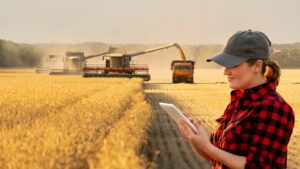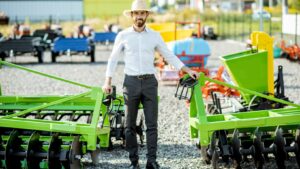 In today’s fast-paced world, the demand for goods has skyrocketed, leading industries to refine their mass production techniques. These methods revolutionize how products are manufactured, ensuring efficiency, consistency, and cost-effectiveness. From the assembly line innovations pioneered by Henry Ford to the advanced automation seen in modern factories, mass production has come a long way. The evolution of these techniques isn’t just about churning out products at an unprecedented scale. It’s about integrating cutting-edge technology, optimizing resources, and minimizing waste. Industries across the globe are constantly adapting to new challenges and opportunities, pushing the boundaries of what’s possible in manufacturing. As businesses strive to meet consumer demands while maintaining quality, understanding the nuances of mass production techniques becomes crucial.
In today’s fast-paced world, the demand for goods has skyrocketed, leading industries to refine their mass production techniques. These methods revolutionize how products are manufactured, ensuring efficiency, consistency, and cost-effectiveness. From the assembly line innovations pioneered by Henry Ford to the advanced automation seen in modern factories, mass production has come a long way. The evolution of these techniques isn’t just about churning out products at an unprecedented scale. It’s about integrating cutting-edge technology, optimizing resources, and minimizing waste. Industries across the globe are constantly adapting to new challenges and opportunities, pushing the boundaries of what’s possible in manufacturing. As businesses strive to meet consumer demands while maintaining quality, understanding the nuances of mass production techniques becomes crucial.
Techniques Of Mass Production ______.
Automation and Robotics
 Automation and robotics enhance efficiency in mass production. Automated systems reduce human error, increase production speed, and ensure consistency. Robots perform repetitive tasks tirelessly, allowing human workers to focus on complex problem-solving activities. Companies invest in advanced robotics to stay competitive, relying on their precision and reliability.
Automation and robotics enhance efficiency in mass production. Automated systems reduce human error, increase production speed, and ensure consistency. Robots perform repetitive tasks tirelessly, allowing human workers to focus on complex problem-solving activities. Companies invest in advanced robotics to stay competitive, relying on their precision and reliability.
Assembly Line Production
Assembly line production revolutionized manufacturing. It’s characterized by dividing tasks among workers, each handling a specific task. This method shortens production time and reduces labor costs by maximizing output and ensuring consistent product quality. Modern assembly lines integrate technology for even greater efficiency.
Computer-Aided Design and Manufacturing (CAD/CAM)
CAD/CAM systems facilitate mass production precision and customization. CAD software designs detailed product models while CAM converts these models into machine instructions. This integration ensures high accuracy in manufacturing processes, reducing trial-and-error, and saving time.
Key Techniques of Mass Production
Mass production relies on several key techniques to maximize efficiency, consistency, and cost-effectiveness in manufacturing processes.
Automation and Robotics
Automation and robotics radically transform production by minimizing human intervention, reducing errors, and accelerating workflow. Robotics automate repetitive tasks in automotive and electronics industries. These technologies lead to higher precision and enhanced output quality.
Assembly Line Techniques
Assembly line techniques involve breaking down production into discrete, manageable tasks. Workers or machines handle specific steps for efficiency. In automotive manufacturing, this approach boosts productivity and uniformity. Task segmentation reduces production time, leading to cost savings and consistent product standards.
Lean Manufacturing Principles
Lean manufacturing principles focus on waste reduction and value maximization throughout the production process. Techniques like value stream mapping and Kaizen drive continuous improvement. By eliminating unnecessary steps and optimizing resource use, companies like Toyota maintain flexibility and respond swiftly to market demands.
Advantages of Mass Production Techniques
 Mass production techniques offer significant benefits in manufacturing that help industries meet escalating consumer demands. By implementing these techniques, businesses achieve substantial cost savings and maintain high-quality products.
Mass production techniques offer significant benefits in manufacturing that help industries meet escalating consumer demands. By implementing these techniques, businesses achieve substantial cost savings and maintain high-quality products.
Mass production reduces unit costs by spreading fixed costs over large quantities of goods. Automation plays a crucial role in decreasing labor expenses, allowing companies to invest more in technology and less in manual operations. This efficiency contributes to competitive pricing, benefiting both manufacturers and consumers.
Consistency and Quality Control
Consistency and quality assurance are key components of mass production techniques. Automated systems ensure that each product meets exact specifications, resulting in uniformity across production lines. Regular inspections and quality control checkpoints minimize defects, enhancing product reliability and customer satisfaction. This rigorous control helps businesses maintain a strong reputation and build consumer trust.
Challenges and Limitations
Mass production techniques, while offering numerous benefits, face several challenges and limitations. Understanding these constraints is essential for businesses aiming to improve their manufacturing processes.
Environmental Concerns
Mass production significantly impacts the environment due to resource extraction and energy consumption. Industries contribute substantially to pollution levels, emitting greenhouse gases and generating waste. Effective waste management systems and sustainable practices, such as recycling and energy-efficient technologies, are essential to mitigating these environmental challenges.
Workforce Impacts
Automation and robotics in mass production reduce human labor, leading to workforce displacement. While these technologies enhance efficiency, human roles become limited to oversight and technical maintenance. This transition demands retraining programs and education initiatives to equip workers with skills relevant to new technological landscapes. Addressing these workforce impacts ensures smoother adaptation to evolving production environments.

